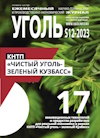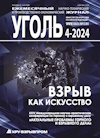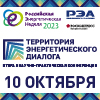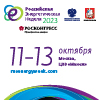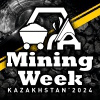
ECOLOGY
Original Paper
UDC 622.85:622.882:622.7.002.68:622.33(571.17) © I.S. Semina, V.A. Androkhanov, A.M. Shipilova, 2022
ISSN 0041-5790 (Print) • ISSN 2412-8333 (Online) • Ugol’ – Russian Coal Journal, 2022, № 7, pp. 60-65
DOI: http://dx.doi.org/10.18796/0041-5790-2022-7-60-65
Title
THERMAL BEHAVIOUR OF SOILS REMEDIATED USING COAL PROCESSING WASTE IN KUZBASS
Authors
Semina I.S.1 , Androkhanov V.A.2, 3, Shipilova A.M.1
1Siberian State Industrial University, Novokuznetsk, 654007, Russian Federation
2Institute of Soil Science and Agrochemistry of the Siberian Branch of the Russian Academy of Sciences, Novosibirsk, 630090, Russian Federation
3Institute for Water and Environmental Problems, Barnaul, 656038,Russian Federation
Authors Information
Semina I.S., PhD (Biological), Associate Professor of Geology, geodesy and life protection department, e-mail: semina.i@mail.ru
Androkhanov V.A., Doctor of Biological Sciences, Director, Chief Research Associate
Shipilova A.M., Ph.D. in Agriculture, Associate Professor of Geology, geodesy and life protection department, e-mail: asya_nk77@mail<st1< a="">:personname >.ru
Abstract
Based on assessment of thermal behaviour of the recultivated soils it was established that the total of biologically active temperatures (? t > 10?С) of young soils on the the reclaimed plots is higher than that of the air-ground interface. Its values exceed the air temperature by 200-500 degrees The maximum increase is observed in the initial embryonic soils in an area with practically no vegetation, while the minimum level is registered in the leached black soils (monitoring). The total of temperatures above 10?С within the upper 5-cm layer of different soils varies widely. The maximum values are recorded in initial embryonic soils (point 1) and exceed 2500?С; in technogenic soils, which upper profile section is made up of loams (point 2), they approach 2400оC. The total of biologically active temperatures is lower in the non-differentiated humus-forming technogenic soils with added mixture of potentially fertile soils and fertile topsoil on the dump surface (point 4). In such soils it is the closest to the temperature of natural zonal soils. It is noted that the embryonic and technogenic soils formed using coal-bearing materials are characterized by higher heat capacity than the zonal soils.
Keywords
Remediation, Soils, Coal processing waste, Technogenic soils, Embryonic soils, Soil temperature, Fertile soil layer, Rocks, Root layer.
References
1. Tarazanov I.G. Russia’s coal industry performance for January – September, 2021. Ugol’, 2022, (1), pp. 47-58. (In Russ.). DOI: 10.18796/0041-5790-2022-1-47-58.
2. Semina I.S., Androkhanov V.A. & Kuliapina E.D. Experience of using coal processing waste for reclamation of disturbed sites. Gornyj informacionno-analiticheskij byulleten?, 2020, (9), pp. 159-175. (In Russ).
3. GOST 30772-2001 Resources saving. Waste treatment. Terms and definitions. Moscow, Izdatelstvo standartov Publ., 2002, 15 p. (In Russ.).
4.Ruiz F., Perlatti F., Oliveira D. & Ferreira T. Revealing tropical technosols as an alternative for mine reclamation and waste management. Minerals, 2020, (10), pp. 110.
5. Masciandaro G. Phytoremediation of dredged marine sediment: Monitoring of chemical and biochemical processes contributing to sediment reclamation. Journal of Environmental Management, 2014, (134), pp. 166-174.
6. Santos E.S., Abreu M.M. & Mac?as F. Rehabilitation of mining areas through integrated biotechnological approach: Technosols derived from organic/inorganic wastes and autochthonous plant development. Chemosphere, 2019, (224), pp. 765-775.
7. Nechaeva T.V., Sokolov D.A. & Sokolova N.A. Assessment of the absorption properties of coals of various metamorphism degrees as exemplified by potassium fixation. Vestnik Tomskogo gosudarstvennogo universiteta, Biologiya, 2018, (44), pp. 6-23. (In Russ.).
8. Glaser B. & Birk J.J. State of the scientific knowledge on properties and genesis of Anthropogenic Dark Earths in Central Amazonia (terra preta de ?ndio). Geochimica et Cosmochimica Acta, 2012, (82), pp. 39-51.
9. Kurachev V.M. & Androkhanov V.A. Classification of soils in technogenic landscapes. Sibirskij ekologicheskij zhurnal, 2002, (3), pp. 255-261. (In Russ.).
10. Semina I.S. & Androkhanov V.A. Environmental and soil survey of sites re? claimed using coal processing wastes, as exemplified by the Kemerovo Region, Kuzbass. Ugol’, 2021, (7), pp. 57-62. (In Russ.). DOI: 10.18796/0041-5790-2021-7-57-62.
11. Semina I.S., Androkhanov V. & Solovyev S. Assessment of revegetation with waste coal on the reclaimed sites in the Kemerovo Region – Kuzbass. E3S Web of Conferences: International Scientific and Research Conference on Knowledge-Based Technologies in Development and Utilization of Mineral Resources, Novokuznetsk, Russia, June 1–4, 2021, (330).
12. Kashulina G.M., Litvinova T.I. & Korobeinikova N.M. СComparative analysis of temperature of podzolic soils of the О layer at two sites of anthropogenically transformed ecosystem (Kola Peninsula) with different degree of degradation. Pochvovedenie, 2020, (9), pp. 1132-1143. (In Russ.).
13. Khaziev F.Kh. Temperature and humidity as environmental factors of biological activity of soils. Ekologiya, 1976, (6), pp. 50-55. (In Russ.).
14. Kulkova L.V. & Shavalieva N.G. Seasonal dynamics of soil temperature in forest and open biotopes of the Basegi Nature Reserve. Vestnik Permskogo universiteta. Seriya Biologiya, 2011, (3-4), pp. 45-49. (In Russ).
15. Dobrovolsky G.V. Soils, City, Environment. Moscow, Foundation for Economic Literacy Publ., 1997, 320 p. (In Russ.).
16. Dimo V.N. Thermal behaviour of soils in the USSR. Moscow, Selkhozgiz Publ., 1949, 447 p. (In Russ.).
Acknowledgments
The investigation was financially supported by the Russian Foundation for Basic Research and Kemerovo Region under Research Project No. 20-44-420006/20.
For citation
Semina I.S., Androkhanov V.A. & ShipilovaA.V. Thermal behaviour of soils remediated using coal processing waste in Kuzbass. Ugol’, 2022, (7), pp. 60-65. (In Russ.). DOI: 10.18796/0041-5790-2022-7-60-65.
Paper info
Received April 20, 2022
Reviewed May 11, 2022
Accepted June 23, 2022



